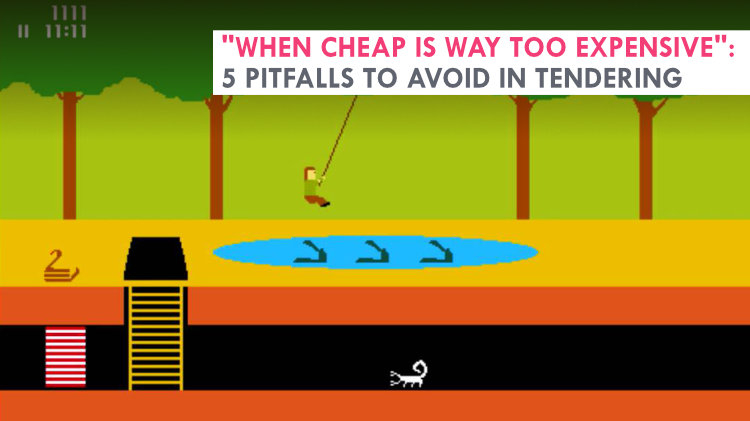
“If you buy cheap, you buy twice.” is a common saying that many of us just scoff at, and of course, this doesn’t have to be true with every purchasing decision of your life. You might buy a used bike instead of a brand new one, which will be more environmentally friendly. However, when it comes to building a house, we’re sure you’d put more thought into it. If you choose the lowest bidder to build your future home, he will likely leave you with plenty of headaches and unforeseen expenses. When it comes to software procurement, much like when you build a house, price should not be the single deciding factor. In fact, if price is the only factor that is considered then you may very well be damaging your reputation, be put at risk of legal ramifications, and will pay even more in the end in hidden costs.
We don’t want you to make these mistakes, so we’re sharing 5 reasons why only paying attention to the price can become very expensive for both your budget and your stress levels:
1) It may be economical, but it’s also poor quality
After putting out a tender for the software that you need, you’ve finally found it. Just look at how inexpensive it is! It’s too good to be true, right?
In some cases that may very well be the truth, if you don’t check thoroughly for what you are actually buying.
Often, when you buy cheap, the quality will also be poor and may technically meet the requirements, but only fulfills them to the bare minimum. But this isn’t the only risk you take when choosing the lowest price. Once you realize that the cheap solution won’t hold up to your standards you’ll have to end up investing more to make up for the lack of quality due to…
2) Hidden costs!
Well, now you’re in a bit of a mess. Your vendor has heavily underbid and every little thing you need to optimize your software is an extra change request, or you may even decide to do the extra work yourself instead of paying the vendor. Either way, you have to figure out workarounds or cope with inefficiency; your users are suffering, and you are losing time and money while you’re waiting for the “final version.” Meanwhile, your other projects are getting delayed, and resources have to be reallocated so that the mess can be fixed. It will undoubtedly take more time to deliver the results you expected.
In the end, you’ll realize that you could have just invested in higher quality in the first place instead of dealing with the aches and pains the cheaper vendor put you through, both financially and organizationally.
So when you buy cheap and therefore low quality, then your users may be hearing:
3) “I don’t give a damn about my reputation!”
That’s right, Joan Jett will be singing in your user’s minds, and it won’t be “I Love Rock & Roll and (insert your company’s name here)”! The product will be harder to use, and the project will inevitably be delayed because you have to come up with workarounds to fix the issues that will arise. Once the user has negative experiences with the solution, dissatisfaction could manifest in different ways: employees using the application will feel undervalued and might even be encouraged to quit, and there will definitely be more complaints for your company to deal with.
Additionally, this might also put you on the path to some…
4) Legal Issues
That cheaper software you bought might not meet contractual obligations or you might miss mandatory deadlines. Your company will be exposed to fines and legal disputes if compliance issues come to fruition. This could lead to some heavy sums having to be paid off simply for not having done your homework better.
And, last but not least:
5) You could be missing out on innovation!
Cheaper suppliers may not invest in innovation that could benefit your company long term. If you don’t ensure that the company you’re procuring from has the same philosophy as you, you could end up with an outdated solution rather than software that is not only innovative but also more adaptable to change, with a shorter learning curve and more robust security. Now, who would want to miss out on that?
So, when you’re out there tendering for your next software, don’t forget to make sure your vendor shares your philosophy and that you actually know what you are getting. Be diligent! Don’t jump immediately at the cheapest bidder, but take your time to get to know the vendor and find out what you are (and are not) purchasing. This way, you will make sure to avoid the long-term costs of a low-quality solution while keeping your users happy and your reputation safe.




